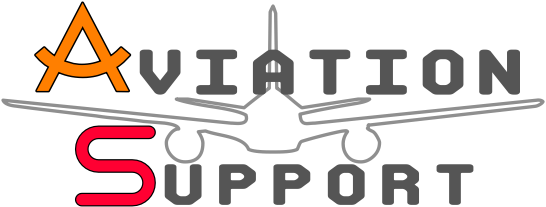Navigating the skies with confidence: Streamlined FAA Part 135 Air Carrier Certification Process.
Key Requirements for Obtaining FAA Part 135 Air Carrier Certification
The FAA Part 135 Air Carrier Certification Process is a rigorous and complex procedure that ensures the safety and compliance of air carriers operating under this certification. To obtain this certification, air carriers must meet a set of key requirements that are outlined by the Federal Aviation Administration (FAA). These requirements are designed to ensure that air carriers have the necessary infrastructure, personnel, and operational procedures in place to operate safely and efficiently.
One of the key requirements for obtaining FAA Part 135 Air Carrier Certification is the establishment of a comprehensive operations manual. This manual serves as a guide for air carrier personnel and outlines the procedures and policies that must be followed during flight operations. It covers a wide range of topics, including aircraft maintenance, crew training, and emergency procedures. The operations manual must be approved by the FAA and must be regularly updated to reflect any changes in regulations or procedures.
In addition to the operations manual, air carriers must also have a robust safety management system (SMS) in place. The SMS is a proactive approach to managing safety and involves the identification and mitigation of potential hazards. It includes processes for reporting and investigating incidents, as well as procedures for implementing corrective actions. The SMS must be integrated into the air carrier’s overall management system and must be regularly reviewed and audited by the FAA.
Another key requirement for obtaining FAA Part 135 Air Carrier Certification is the establishment of a maintenance program. This program ensures that aircraft are properly maintained and inspected to ensure their airworthiness. The maintenance program must include procedures for routine inspections, as well as for addressing any necessary repairs or modifications. The FAA requires that air carriers have qualified maintenance personnel and that they follow approved maintenance procedures.
In addition to these requirements, air carriers must also have a qualified management team in place. This team is responsible for overseeing the day-to-day operations of the air carrier and ensuring compliance with FAA regulations. The management team must have a thorough understanding of the FAA’s requirements and must be able to demonstrate their ability to effectively manage the air carrier’s operations.
Finally, air carriers must undergo a comprehensive FAA inspection before they can obtain Part 135 Air Carrier Certification. This inspection includes a review of the air carrier’s operations manual, maintenance program, and safety management system. The FAA inspectors will also conduct interviews with key personnel and may perform on-site inspections of aircraft and facilities. If any deficiencies are identified during the inspection, the air carrier must address them before they can be granted certification.
In conclusion, obtaining FAA Part 135 Air Carrier Certification is a complex process that requires air carriers to meet a set of key requirements. These requirements include the establishment of a comprehensive operations manual, a robust safety management system, a maintenance program, a qualified management team, and a successful FAA inspection. By meeting these requirements, air carriers can demonstrate their commitment to safety and compliance, and ensure that they are operating at the highest standards set by the FAA.
Common Challenges and Tips for Successfully Completing FAA Part 135 Air Carrier Certification Process

The FAA Part 135 Air Carrier Certification Process can be a complex and challenging endeavor for any aviation company. This certification is required for operators who wish to conduct commercial air transportation operations, such as air taxi services or on-demand charter flights. While the process may seem daunting, there are common challenges that can be overcome with careful planning and preparation. In this article, we will explore these challenges and provide tips for successfully completing the FAA Part 135 Air Carrier Certification Process.
One of the most common challenges faced by operators seeking Part 135 certification is understanding the regulatory requirements. The FAA has established a set of rules and regulations that must be followed in order to obtain and maintain this certification. These regulations cover a wide range of areas, including aircraft maintenance, pilot training, and operational procedures. It is essential for operators to thoroughly familiarize themselves with these requirements and ensure that their operations are in compliance.
Another challenge that operators often face is developing the necessary documentation and manuals required by the FAA. The certification process requires operators to submit a variety of documents, such as operations manuals, training programs, and maintenance procedures. These documents must be comprehensive and demonstrate that the operator has established a safe and efficient operation. Developing these documents can be time-consuming and requires a thorough understanding of the regulatory requirements. It is important for operators to allocate sufficient time and resources to this task to ensure that all necessary documentation is in place.
In addition to understanding the regulatory requirements and developing the necessary documentation, operators must also demonstrate their ability to operate safely. This includes conducting a comprehensive safety assessment and implementing a safety management system. The safety assessment involves identifying potential hazards and developing strategies to mitigate these risks. The safety management system is a proactive approach to safety that involves ongoing monitoring and continuous improvement. Operators must be able to demonstrate that they have implemented these safety measures and are committed to maintaining a safe operation.
One tip for successfully completing the FAA Part 135 Air Carrier Certification Process is to engage with industry experts and consultants. These professionals have experience navigating the certification process and can provide valuable guidance and support. They can help operators understand the regulatory requirements, develop the necessary documentation, and implement effective safety measures. Engaging with industry experts can save operators time and resources and increase their chances of successfully obtaining Part 135 certification.
Another tip is to allocate sufficient time and resources to the certification process. Rushing through the process can lead to mistakes and oversights that can delay certification or result in a denial. Operators should carefully plan their timeline and allocate the necessary resources to ensure that all requirements are met. This may involve hiring additional staff, outsourcing certain tasks, or dedicating internal resources to the certification process.
In conclusion, the FAA Part 135 Air Carrier Certification Process can be challenging, but with careful planning and preparation, operators can successfully navigate this process. Understanding the regulatory requirements, developing the necessary documentation, and demonstrating a commitment to safety are key to obtaining Part 135 certification. Engaging with an expert aviation consultant and allocating sufficient time and resources are also important tips for success. By following these tips and approaching the certification process with diligence and professionalism, operators can achieve their goal of becoming a certified Part 135 air carrier.
Overview of FAA Part 135 Air Carrier Certification Process
The Federal Aviation Administration (FAA) is responsible for regulating and overseeing the aviation industry in the United States. One of the key areas that the FAA focuses on is the certification process for air carriers. This process, known as FAA Part 135 Air Carrier Certification, is designed to ensure that operators meet the necessary safety standards and can provide a reliable and efficient service to the public.
The FAA Part 135 Air Carrier Certification process is a comprehensive and rigorous procedure that involves several steps. The first step is the submission of an application to the FAA. This application must include detailed information about the operator, including their business structure, management team, and financial stability. The FAA will review this application and determine if the operator meets the initial requirements for certification.
Once the initial application is approved, the operator must then undergo a thorough inspection by the FAA. This inspection, known as the Operational Control Inspection (OCI), is conducted to assess the operator’s ability to safely operate aircraft and comply with all relevant regulations. During the OCI, the FAA will review the operator’s manuals, training programs, maintenance procedures, and other operational aspects to ensure that they meet the required standards.
In addition to the OCI, the operator must also undergo a Flight Standards District Office (FSDO) inspection. This inspection focuses on the operator’s aircraft and maintenance facilities. The FSDO inspector will review the operator’s maintenance records, conduct a physical inspection of the aircraft (aircraft conformity inspection), and ensure that all necessary repairs and maintenance have been completed.
Once the inspections are complete, the FAA will review all the information gathered and make a final determination on whether to grant the operator Part 135 Air Carrier Certification. If the operator is successful, they will receive a certificate that allows them to operate as an air carrier under Part 135 of the Federal Aviation Regulations.
It is important to note that the FAA Part 135 Air Carrier Certification process is not a one-time event. Once certified, operators are subject to ongoing oversight and inspections by the FAA to ensure that they continue to meet the required standards. This includes regular inspections of aircraft, maintenance facilities, personnel proficiency, and operational procedures.
The FAA Part 135 Air Carrier Certification process is designed to ensure that operators have the necessary systems and procedures in place to provide a safe and reliable service to the public. By undergoing a thorough inspection and meeting the required standards, operators can demonstrate their commitment to safety and professionalism.
In conclusion, the FAA Part 135 Air Carrier Certification process is a comprehensive and rigorous procedure that operators must undergo to demonstrate their ability to safely operate aircraft and comply with all relevant regulations. By meeting the necessary requirements and undergoing inspections, operators can obtain certification and operate as air carriers under 14 CFR Part 135 of the Federal Aviation Regulations. This certification process is an important step in ensuring the safety and reliability of air transportation in the United States.






